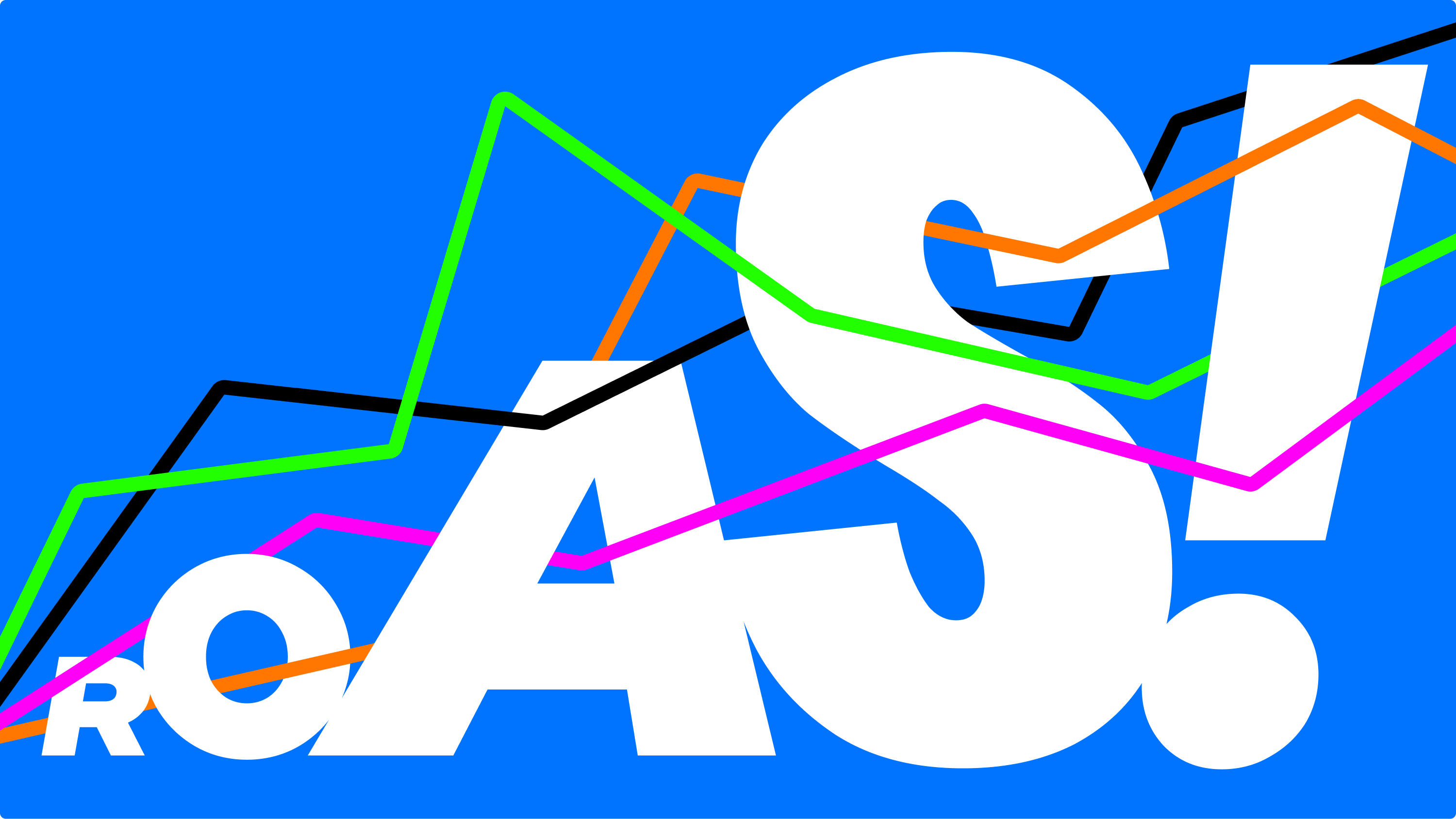Facebook Ads Manager can provide you insights into ad performance, but it can’t show you the full journey or behavior of your users and customers on your website. This is where Tracking Facebook ads in Google Analytics comes in handy.
Integrating Facebook ad data into Google Analytics is a critical part of the smart marketer’s Facebook ad strategy.
In this guide, you’ll learn how to quickly and easily start tracking Facebook ads in Google Analytics without requiring any additional tools.
Why Track Facebook Ads in Google Analytics?
Tracking your Facebook ads in Google Analytics is a game-changer as it allows you to understand user interactions with your website and getting a comprehensive view of customer journeys.
While Facebook provides some basic information about your website's performance, it pales in comparison to the depth of insights offered by Google Analytics.
Facebook Ad Manager may give you a rough idea of how many people viewed and clicked on your ad, but it loses track of these individuals once they leave the platform.
This limitation prevents you from fully understanding their behavior beyond the initial click.
However, Google Analytics comes to the rescue by providing valuable demographic data from your Facebook ad campaigns and allowing you to track customer behavior, device functionality, and more once users land on your website.
Especially with the recent changes to iOS 14 and attribution settings, Facebook Ads Manager may now show up to a 40% reduction in reported conversions. This reduction can make it challenging to gauge the true impact of your campaigns accurately.
Thankfully, with Google Analytics, you gain access to a wealth of information, including data on conversions, clicks, and sessions. This invaluable data can empower you to make data-driven decisions and improve the overall performance of your marketing campaigns.
By leveraging the power of Google Analytics to complement your Facebook advertising efforts, you'll have a clearer understanding of your audience and be better equipped to optimize your campaigns for success.
How to track Facebook ads in Google Analytics: Google Analytics setup
The first step to set up Facebook ad tracking in Google Analytics is to set up Google Tag Manager.
Although not required, it’s best practice to use Google Tag Manager to manage all your tracking scripts in one place.
After creating your account, you’ll be given a piece of code that you’ll need to add to your website.
As the instructions suggest, you’ll have to paste the first code as high in the header as possible and the second piece of code after the opening of the <body> tag.

Once you’ve added the two pieces of code to your website, you can head towards the Google Analytics page to create your Google Analytics account.
Once you’re done with the form, you’ll be taken to a page that will present you with your tracking code.
The tracking ID informs which Google Analytics account to send the data to.
Once you have a tracking ID, it’s time to add Google Analytics to your Google Tag Manager.
Go to the Google Tag Manager and click on the Add a new tag button.
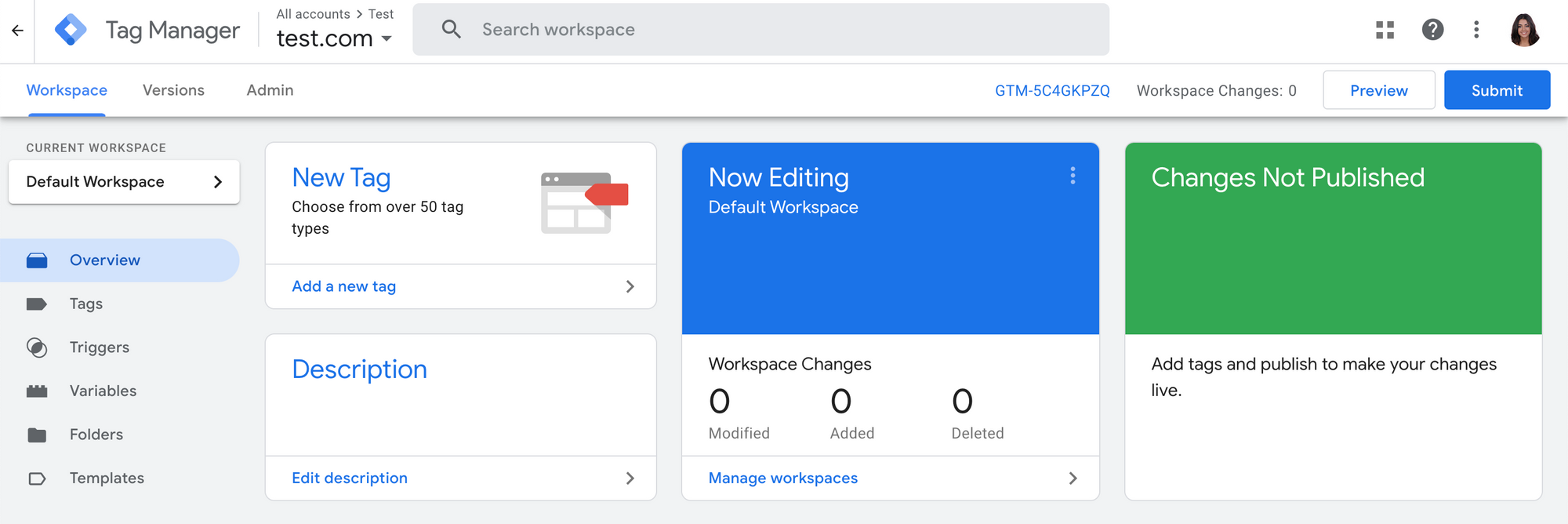
You’ll be taken to a new page on which you have two options to choose from: configuration and triggering.
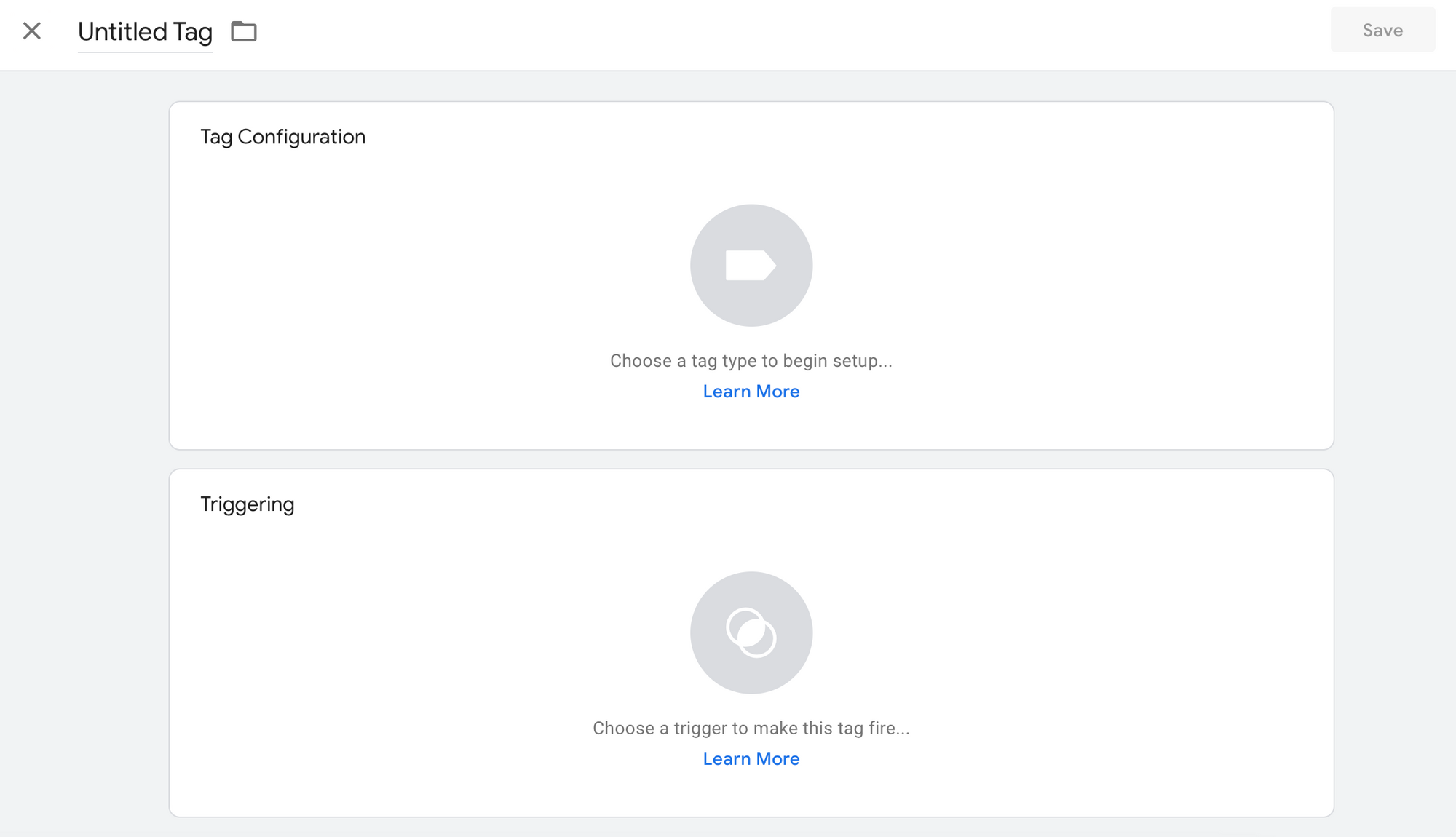
In the configuration section, you’ll choose where to send the data collected by the tag.
Click on the Tag Configuration button in the configuration section to choose the GA4 Configuration option.
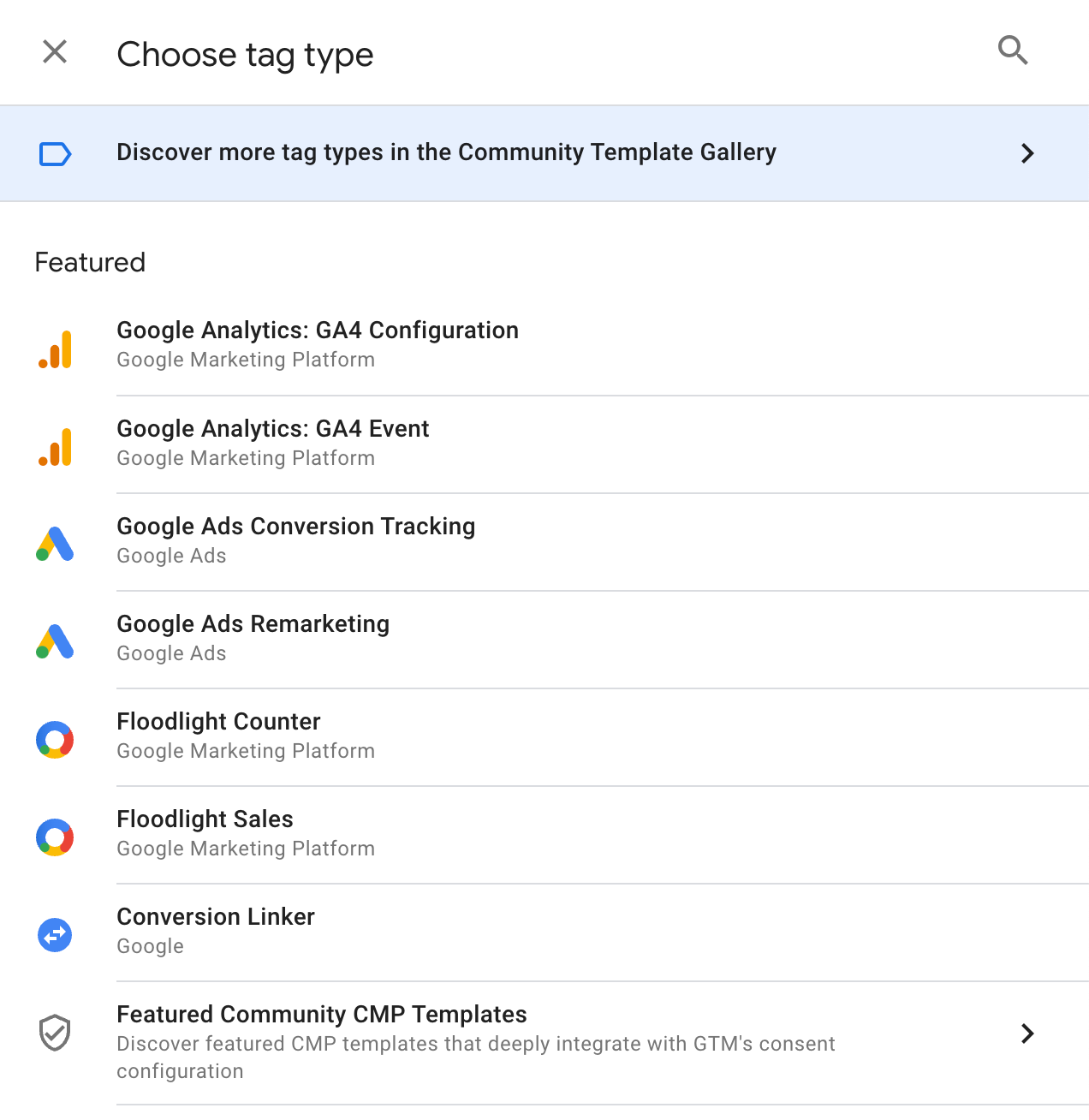
Next, click on the Google Analytics Setting option and select New Variable from the dropdown menu.
Finally, paste your tracking ID so that you’ll be the one who can see all the data Google Analytics gathers about your website visitors.
Next, visit the Triggering section.
On the Choose a trigger page, click on All pages.

This setting will make Google Analytics gather data from all of the pages on your website.
After setting up the new tag, click Save to finish setting it up.
Track conversion events in Google Analytics
The next step is to track conversion events in Google Analytics, called Goals.
Depending on the type of business you’re setting this up for, how you set up Goals will be very different.
For advertisers running Facebook ads for ecommerce with Shopify, Shopify has a Google Analytics integration to make this process pretty much done for you.
If you’re using a different ecommerce platform than Shopify, first check if they have a native integration with Google Analytics.
If you don’t see a native integration available, or this is for a lead gen business, you’ll need to set up a goal yourself by going inside Google Analytics and clicking on Admin in the left corner of the screen.
Under the View column on the right, click Goals and then the red + New Goal button. You’ll see a variety of ways to set up a conversion goal.
You can choose from pre-filed configurations or do it custom.
Linking Facebook ads to Google Analytics: Facebook ads setup
Once you set up Google Analytics, you’ll see activity under the referrer facebook.com.
However, without being given specific instructions, Google Analytics will lump together visits from all of your Facebook posts, including your regular posts on your business page.
To know exactly which Facebook ad campaigns, ad sets, and ads you’re getting traffic from, all you need to use are URL (or UTM) parameters in your Facebook ads.
URL parameters enable you to parse and identify exactly which campaign or ad set is attracting traffic to your website.
Here’s an example of a URL parameter:
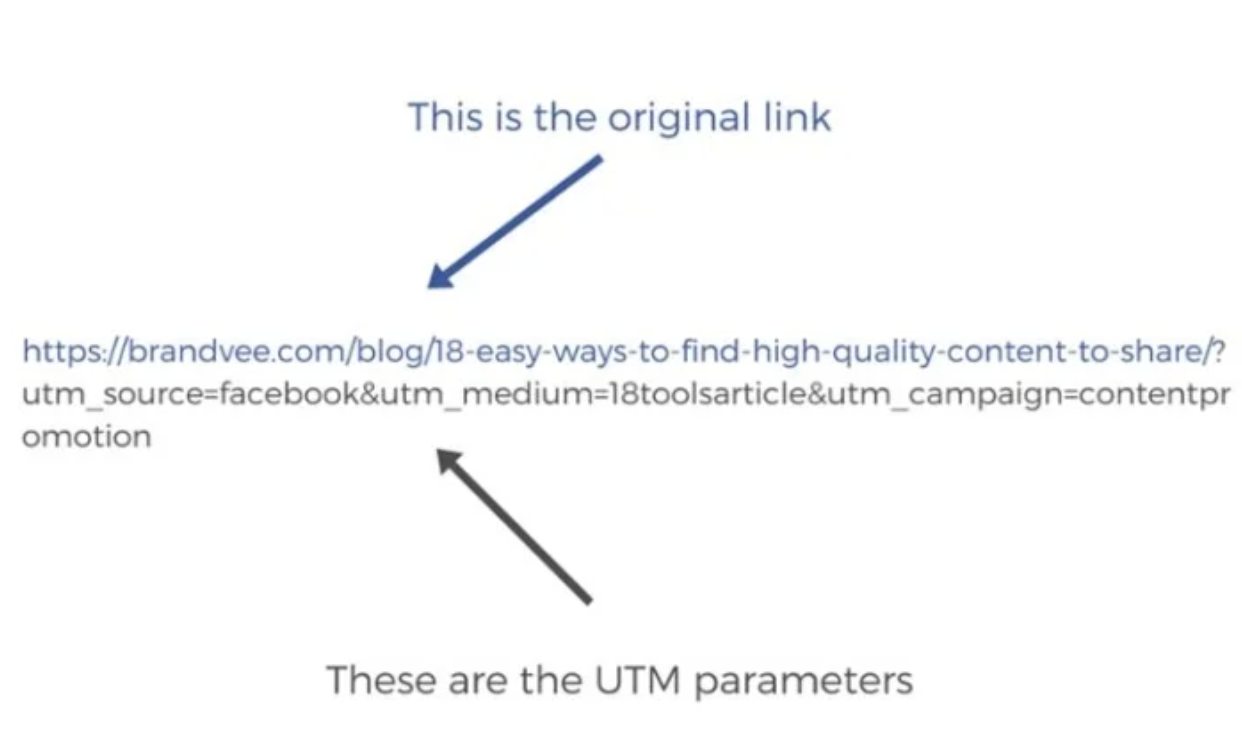
In Facebook ads manager when building a new ad or editing an existing one, you can customize its URL parameters.
Under the URL Parameters section, click the blue “Build a URL Parameter.” A window will appear where you can easily set dynamic URL parameters.
For campaign source, I recommend just “Facebook” as that’s how Google Analytics records Facebook traffic by default.
You can choose “ppc” as the medium to designate the traffic as paid traffic.
Campaign source and medium are the only required parameters you need, but to record the Facebook ad campaign, ad set, and ad, you need to add some extra custom parameters.
Campaign name is already available and choose {{campaign.name}} from the field dropdown and Facebook will dynamically populate the name of the campaign the current ad is in making this process super simple.
Then add Custom Parameters for ad set and ad and choose {{adset.name}} and {{ad.name}} and it will automatically insert your existing Facebook campaign structure naming conventions into your URL parameters making it really easy to analyze campaign performance in Google Analytics.
Keep a spreadsheet with all of your parameters so you’ll remember what the parameters mean later on and to help keep your URL parameter naming conventions consistent.
Analyzing Facebook ads performance in Google Analytics
To analyze the performance of your ads, head to your Google Analytics account and navigate to the left-side menu.
Click on Acquisition, and then select All Traffic and Source/Medium. Then select Campaign from the Secondary dimension dropdown.
From this view, you’ll be able to analyze the performance and behavior of your users acquired from Facebook ad campaigns.
The campaign name will be identical to the campaign names you use in Ads Manager if you chose to use the dynamic variable {{campaign.name}}.
To analyze behavior and performance to the ad set and ad level, you just need to add Custom Dimensions from the admin panel on the property settings.
After you’ve linked Facebook Ads to your Google Analytics, all you have to do is sit back until enough data has populated.
Dealing with discrepancies: Why is there a Facebook ad and Google Analytics discrepancy?
Due to the differences between how Facebook and Google Analytics collects data, there are often discrepancies in the data obtained from the two platforms.
Typically, Facebook ads over reports on conversions compared to Google Analytics.
For example, some marketers report seeing discrepancies as high as 80% between Facebook and Google Analytics click, session, and conversion data.
Why?
Google Analytics uses a last-click attribution model to attribute conversions, which means Google will prioritize crediting the last place a user came from as the source of the conversion.
On the other hand, Facebook’s attribution model is biased towards assigning more credit to what’s happening on the platform.
Instead of giving credit to the last place where the user was active, Facebook will attribute credit to the ad, ad set, and campaign if the user viewed or clicked on a Facebook ad at any point within the conversion window before converting.
Facebook also counts duplicate link clicks as engagements.
For example, if a user clicks on your ad twice in a certain time frame, Facebook will count two conversions and Google Analytics will count one.
But the way conversions are attributed isn’t the only reason for the conversion count discrepancies between the two platforms.
Having a different time zone on your Facebook ad account compared to your Google Analytics account will also lead to different numbers.
Google Analytics relies on cookies to track user behavior. As users become savvier, many of them opt out of using cookies, which means Google Analytics may lose a lot of opportunities to track them.
However, because Facebook doesn’t rely on cookies to track users, the social platform may be able to report more clicks.
The tracking scripts for Google Analytics can also be slower to fire.
For example, if a user clicks on a Facebook ad but exits too quickly, the Google Analytics code might not load quick enough and the click wouldn’t be counted.
Facebook conversion data, more often than not, can offer a biased view of revealing what channels or campaigns got people to convert.
By reporting and analyzing conversion attribution data Google Analytics, you can make it your “one source of truth” and measure attribution consistently across all your marketing channels.
🤯
You might also be interested in: 5 Ways to Make your PPC Reports Better Today
Key takeaways
- You don't need a third-party tool to get Facebook ad data in Google Analytics
- You can use URL parameters to start identifying Facebook ad traffic down to the ad level
- You can use Facebook's built-in dynamic URL builder to automate URL parameters
- Consistent naming conventions for URL parameters is critical for long-term analysis
Facebook Ads Manager can provide you insights into ad performance, but it can’t show you the full journey or behavior of your users and customers on your website. This is where Tracking Facebook ads in Google Analytics comes in handy.
Integrating Facebook ad data into Google Analytics is a critical part of the smart marketer’s Facebook ad strategy.
In this guide, you’ll learn how to quickly and easily start tracking Facebook ads in Google Analytics without requiring any additional tools.
Why Track Facebook Ads in Google Analytics?
Tracking your Facebook ads in Google Analytics is a game-changer as it allows you to understand user interactions with your website and getting a comprehensive view of customer journeys.
While Facebook provides some basic information about your website's performance, it pales in comparison to the depth of insights offered by Google Analytics.
Facebook Ad Manager may give you a rough idea of how many people viewed and clicked on your ad, but it loses track of these individuals once they leave the platform.
This limitation prevents you from fully understanding their behavior beyond the initial click.
However, Google Analytics comes to the rescue by providing valuable demographic data from your Facebook ad campaigns and allowing you to track customer behavior, device functionality, and more once users land on your website.
Especially with the recent changes to iOS 14 and attribution settings, Facebook Ads Manager may now show up to a 40% reduction in reported conversions. This reduction can make it challenging to gauge the true impact of your campaigns accurately.
Thankfully, with Google Analytics, you gain access to a wealth of information, including data on conversions, clicks, and sessions. This invaluable data can empower you to make data-driven decisions and improve the overall performance of your marketing campaigns.
By leveraging the power of Google Analytics to complement your Facebook advertising efforts, you'll have a clearer understanding of your audience and be better equipped to optimize your campaigns for success.
How to track Facebook ads in Google Analytics: Google Analytics setup
The first step to set up Facebook ad tracking in Google Analytics is to set up Google Tag Manager.
Although not required, it’s best practice to use Google Tag Manager to manage all your tracking scripts in one place.
After creating your account, you’ll be given a piece of code that you’ll need to add to your website.
As the instructions suggest, you’ll have to paste the first code as high in the header as possible and the second piece of code after the opening of the <body> tag.

Once you’ve added the two pieces of code to your website, you can head towards the Google Analytics page to create your Google Analytics account.
Once you’re done with the form, you’ll be taken to a page that will present you with your tracking code.
The tracking ID informs which Google Analytics account to send the data to.
Once you have a tracking ID, it’s time to add Google Analytics to your Google Tag Manager.
Go to the Google Tag Manager and click on the Add a new tag button.

You’ll be taken to a new page on which you have two options to choose from: configuration and triggering.

In the configuration section, you’ll choose where to send the data collected by the tag.
Click on the Tag Configuration button in the configuration section to choose the GA4 Configuration option.

Next, click on the Google Analytics Setting option and select New Variable from the dropdown menu.
Finally, paste your tracking ID so that you’ll be the one who can see all the data Google Analytics gathers about your website visitors.
Next, visit the Triggering section.
On the Choose a trigger page, click on All pages.

This setting will make Google Analytics gather data from all of the pages on your website.
After setting up the new tag, click Save to finish setting it up.
Track conversion events in Google Analytics
The next step is to track conversion events in Google Analytics, called Goals.
Depending on the type of business you’re setting this up for, how you set up Goals will be very different.
For advertisers running Facebook ads for ecommerce with Shopify, Shopify has a Google Analytics integration to make this process pretty much done for you.
If you’re using a different ecommerce platform than Shopify, first check if they have a native integration with Google Analytics.
If you don’t see a native integration available, or this is for a lead gen business, you’ll need to set up a goal yourself by going inside Google Analytics and clicking on Admin in the left corner of the screen.
Under the View column on the right, click Goals and then the red + New Goal button. You’ll see a variety of ways to set up a conversion goal.
You can choose from pre-filed configurations or do it custom.
Linking Facebook ads to Google Analytics: Facebook ads setup
Once you set up Google Analytics, you’ll see activity under the referrer facebook.com.
However, without being given specific instructions, Google Analytics will lump together visits from all of your Facebook posts, including your regular posts on your business page.
To know exactly which Facebook ad campaigns, ad sets, and ads you’re getting traffic from, all you need to use are URL (or UTM) parameters in your Facebook ads.
URL parameters enable you to parse and identify exactly which campaign or ad set is attracting traffic to your website.
Here’s an example of a URL parameter:

In Facebook ads manager when building a new ad or editing an existing one, you can customize its URL parameters.
Under the URL Parameters section, click the blue “Build a URL Parameter.” A window will appear where you can easily set dynamic URL parameters.
For campaign source, I recommend just “Facebook” as that’s how Google Analytics records Facebook traffic by default.
You can choose “ppc” as the medium to designate the traffic as paid traffic.
Campaign source and medium are the only required parameters you need, but to record the Facebook ad campaign, ad set, and ad, you need to add some extra custom parameters.
Campaign name is already available and choose {{campaign.name}} from the field dropdown and Facebook will dynamically populate the name of the campaign the current ad is in making this process super simple.
Then add Custom Parameters for ad set and ad and choose {{adset.name}} and {{ad.name}} and it will automatically insert your existing Facebook campaign structure naming conventions into your URL parameters making it really easy to analyze campaign performance in Google Analytics.
Keep a spreadsheet with all of your parameters so you’ll remember what the parameters mean later on and to help keep your URL parameter naming conventions consistent.
Analyzing Facebook ads performance in Google Analytics
To analyze the performance of your ads, head to your Google Analytics account and navigate to the left-side menu.
Click on Acquisition, and then select All Traffic and Source/Medium. Then select Campaign from the Secondary dimension dropdown.
From this view, you’ll be able to analyze the performance and behavior of your users acquired from Facebook ad campaigns.
The campaign name will be identical to the campaign names you use in Ads Manager if you chose to use the dynamic variable {{campaign.name}}.
To analyze behavior and performance to the ad set and ad level, you just need to add Custom Dimensions from the admin panel on the property settings.
After you’ve linked Facebook Ads to your Google Analytics, all you have to do is sit back until enough data has populated.
Dealing with discrepancies: Why is there a Facebook ad and Google Analytics discrepancy?
Due to the differences between how Facebook and Google Analytics collects data, there are often discrepancies in the data obtained from the two platforms.
Typically, Facebook ads over reports on conversions compared to Google Analytics.
For example, some marketers report seeing discrepancies as high as 80% between Facebook and Google Analytics click, session, and conversion data.
Why?
Google Analytics uses a last-click attribution model to attribute conversions, which means Google will prioritize crediting the last place a user came from as the source of the conversion.
On the other hand, Facebook’s attribution model is biased towards assigning more credit to what’s happening on the platform.
Instead of giving credit to the last place where the user was active, Facebook will attribute credit to the ad, ad set, and campaign if the user viewed or clicked on a Facebook ad at any point within the conversion window before converting.
Facebook also counts duplicate link clicks as engagements.
For example, if a user clicks on your ad twice in a certain time frame, Facebook will count two conversions and Google Analytics will count one.
But the way conversions are attributed isn’t the only reason for the conversion count discrepancies between the two platforms.
Having a different time zone on your Facebook ad account compared to your Google Analytics account will also lead to different numbers.
Google Analytics relies on cookies to track user behavior. As users become savvier, many of them opt out of using cookies, which means Google Analytics may lose a lot of opportunities to track them.
However, because Facebook doesn’t rely on cookies to track users, the social platform may be able to report more clicks.
The tracking scripts for Google Analytics can also be slower to fire.
For example, if a user clicks on a Facebook ad but exits too quickly, the Google Analytics code might not load quick enough and the click wouldn’t be counted.
Facebook conversion data, more often than not, can offer a biased view of revealing what channels or campaigns got people to convert.
By reporting and analyzing conversion attribution data Google Analytics, you can make it your “one source of truth” and measure attribution consistently across all your marketing channels.
🤯
You might also be interested in: 5 Ways to Make your PPC Reports Better Today
Key takeaways
- You don't need a third-party tool to get Facebook ad data in Google Analytics
- You can use URL parameters to start identifying Facebook ad traffic down to the ad level
- You can use Facebook's built-in dynamic URL builder to automate URL parameters
- Consistent naming conventions for URL parameters is critical for long-term analysis












